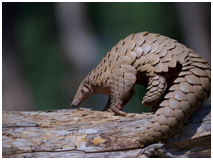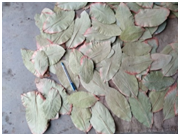GOVERNMENT INTERVENTIONS
1. MARINE SPATIAL PLANNING FRAMEWORK
TAGS: PRELIMS- GS-II-GOVERNMENT INTERVENTIONS
THE CONTEXT: Puducherry has launched the country’s first Marine Spatial Planning (MSP) framework as part of a pact under the Indo-Norway Integrated Ocean Initiative.
THE EXPLANATION:
Aim: to balance growth alongside sustainable management of ocean resources and coastal environment preservation.
About Marine Spatial Planning:
- MSP is an ecosystem-based spatial planning process for analyzing current and anticipated ocean and coastal uses and identifying areas most suitable for various activities.
- It provides a public policy process for society to better determine how the ocean and coasts are sustainably used and protected – now and for future generations.
- The initiative, known as Marine Spatial Planning (MSP), will be implemented by the Ministry of Earth Sciences (MoES) through the National Centre for Coastal Research (NCCR) for India.
The IOC-UNESCO Marine Spatial Planning Programme:
- It helps countries implement ecosystem-based management by finding space for biodiversity, conservation and sustainable economic development in marine areas.
- IOC-UNESCO has developed several guides, including a 10-step guide on how to get a marine spatial plan started: “Step-by-step Approach for Marine Spatial Planning toward Ecosystem-based Management”.
POLITY AND GOVERNANCE
2. ALLOCATION OF ELECTION SYMBOLS BY ELECTION COMMISSION OF INDIA (ECI)
TAGS: PRELIMS- GS-II-POLITY
THE CONTEXT: ECI has recognised Eknath Shinde group as official “Shiv Sena”, allowing them to use the official “Bow & Arrow” symbol and “Shiv Sena” name.
THE EXPLANATION:
Sadiq Ali case
- The ECI has applied the tests mentioned in the 1971 Supreme Court judgment in Sadiq Ali v. Election Commission of India.
- In the Sadiq Ali case, it was held that in matters of disputes among groups of a political party, the test of majority support among the members of the ‘organizational and legislature wings’ of the party was the critical test to decide the dispute.
- It includes the Test of aims and objects of the Party Constitution, Test of Party Constitution and Test of Majority.
The 1968 Order
- On the question of a split in a political party outside the legislature, Para 15 of the Symbols Order, 1968, states that the decision of the Commission shall be binding on all such rival sections or groups.
- This applies to disputes in recognised national and state parties (like the Shiv Sena).
- For splits in registered but unrecognized parties, the ECI usually advises the warring factions to resolve their differences internally or to approach the court.
- The first case to be decided under the 1968 Order was the first split in the Indian National Congress in 1969.
Election Symbols:
- Political parties are allotted the symbols by the Election Commission of India under the Election Symbols (Reservation & Allotment) Order, 1968.
- A reserved symbol is one that is allocated to a registered political party while a free symbol is available to be allocated to non-recognized parties and independent candidates.
- Paragraph 4 of the order deals with the allotment of symbols.
- Paragraph 5 classifies the symbol into reserved and free symbols.
- Paragraph 8 of the Election Symbols Order deals with the choice and allotment of symbols to candidates of national and state parties.
Registration of Political Parties:
- According to the Election Commission, any party seeking registration has to apply to the Commission within a period of 30 days following the date of its formation as per guidelines prescribed by the Commission
- It is in exercise of the powers conferred by Article 324 of the Constitution of India and Section 29A of the Representation of the People Act, 1951.
- The registration of all political parties is governed by the provisions of Section 29A of the Representation of the People Act, 1951.
3. MOMENTUM 2.0 APP
TAGS: PRELIMS- GS-II- Government Schemes
THE CONTEXT: Delhi Metro will introduce the Momentum 2.0 app that will allow users to make a variety of purchases and schedule various services, including those for last-mile connectivity.
THE EXPLANATION:
About Momentum 2.0 app:
- It is India’s first virtual shopping app for the metro.
- It is launched by the Delhi Metro Rail Corporation (DMRC).
- Features:
- It will allow customers to make payments and schedule services, including those for last-mile connections.
- It will also contain features such as rapid recharge of Delhi Metro’s smart cards and smart payment choices for other utility services.
- The app would also allow users to have digital lockers at metro stations.
- Commuters can use this app to find bikes, e-rickshaws, cabs, and the schedules of feeder buses and cluster bus routes from Delhi Metro stations.
- The app will also provide complete information on metro station infrastructure, such as the location and condition of gates, lifts, escalators, platforms, train scheduling, coach occupancy, and space availability.
- The app will also provide information on shops, outlets, kiosks, and ATMs located at the stations.
ENVIRONMENT AND ECOLOGY
4. PANGOLINS
TAGS: PRELIMS- GS-III- Environment
THE CONTEXT: According to the analysis by TRAFFIC, a global wildlife conservation non-profit, and World-Wide Fund for Nature-India, over 1200 Pangolins were poached for illegal wildlife trade in India from 2018-2022.
THE EXPLANATION:
About Pangolins:
- Pangolins are nocturnal, toothless mammals that dig burrows and feed on ants and termites.
- Pangolins are scaly anteater mammals and they have large, protective keratin scales covering their skin.
- Pangolin is the only scaly mammal on the planet.
- It uses these scales as armor to defend itself against predators by rolling into a ball when threatened.
- Out of the eight species of pangolin, the Indian Pangolin (Manis crassicaudata) and the Chinese Pangolin (Manis pentadactyla) are found in India.
About Ecosystem Services:
- They play a vital role in the ecosystem management, mostly in aerating and adding moisture to the soil as well as succession of plant communities through burrowing.
- They also keep in check the population of certain insects they prey on.
- The burrows made by pangolins also get utilized as shelters by other species within their ecosystem.
Indian Pangolin
- Range – Bangladesh, India, Nepal, Pakistan and Sri Lanka
- IUCN – Endangered
- The Indian pangolin, which dons a thick scaly skin, is hunted for meat and used in traditional Chinese medicine.
- Both these species are listed under Schedule I Part I of the Wildlife (Protection) Act, 1972.
Chinese Pangolin
- Range – Bangladesh; Bhutan; China; Hong Kong; India; Lao People’s Democratic Republic; Myanmar; Nepal; Taiwan, Province of China; Thailand; Viet Nam
- IUCN – Critically Endangered.
PRELIMS PERSPECTIVE
5. KENDU LEAF
TAGS: PRELIMS PERSPECTIVE
THE CONTEXT:The GST council meeting recently rejected Odisha’s demand for tax exemption on kendu leaf.
THE EXPLANATION:
About Kendu leaf:
- Kendu leaf is called the green gold of Odisha.
- It is a nationalized product like Bamboo and Sal seed.
- It is one of the most important non-wood forest products of Odisha.
- It is also referred to as tendu leaf in some parts of the country and is used to roll tobacco into bidis (local cigarettes).
Production:
- The states producing kendu leaves in India comprise mainly Madhya Pradesh, Chhattisgarh, Odisha, Andhra Pradesh, Jharkhand, Gujarat, and Maharashtra.
- Odisha is the third-largest producer of kendu leaf after Madhya Pradesh and Chhattisgarh.

